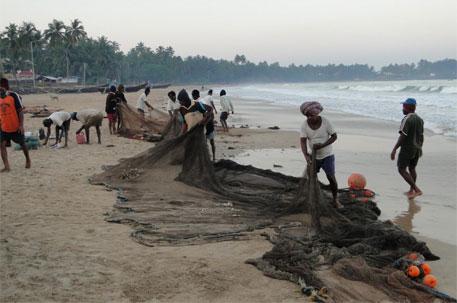Commercialisation of the Coast: Modi Government Overhauls Coastal Regulation Zone

Representational Image. | Image Courtesy: India Environment Portal
In yet another attempt aimed at benefiting the corporates, the Modi government has approved an overhaul of the Coastal Zone Regulation (CRZ) rules.
The protection and development of the coast was till now governed by the Coastal Regulation Zone Notification (2011) that defines what areas fall under the CRZ and what activities are permitted there. The new rules will allow “public utilities” like sewage treatment plants, link roads, coastal roads, and ecotourism projects in CRZ 1 or the most protected and the regulated zones. The government is trying its best to brand the move as one that will lead to significant employment generation and rejuvenate the coastal areas while reducing their vulnerabilities. Fishermen, activists and environment experts on the ground suggest otherwise.
The move is set to promote commercialisation in the most protected zones which can have disastrous consequences for the communities living on the coastline and also the environment.
Speaking with NewsClick, Charles George of the Kerala Matsya Thozhilali Aikya Vedi said, “The decision of the Union Cabinet is highly unfortunate. In the name of addressing the issues of conventional fishing workers, the government has prescribed a treatment that is more dangerous than the disease itself. This decision is anti fishing workers and anti-environmental, and it doesn't take into consideration the interests of the fishing workers.”
Also Read: Centre’s Laxity Over the Issues of Fishermen Community Continues
The CRZ is currently classified into four categories — CRZ I is the most protected and regulated, CRZ II is carved out in urban areas, CRZ III in rural areas, and CRZ IV is defined as the area 12 nautical miles from the low tide line on the seaward side.
The proposed rules will also permit applying existing town and country planning rules for building construction in CRZ II areas, which are frozen under the current regulation.
The draft is also aiming to authorise the National Centre for Sustainable Coastal Management (NCSCM) to demarcate the tide lines all along the coastline unlike earlier, when seven different agencies were authorised to do so. The draft rules distinguish between the CRZ III A and CRZ III B, where the former has a higher density of population. The No Development Zone (NDZ) in CRZ III A areas is now 50m from the High Tide Line, narrower from 200m under current regulations, but remains 200m for CRZ III B areas.
The CRZ 2011 had guaranteed environmental protection and livelihood security to the coastal community. With the new draft rules, the local communities are anxious that the agenda of the government to come off as pro tourism may override the interest of the native communities.
Also Read: Nation Wide Protest by Fish Workers Against Proposed Shipping Corridor
Rejecting the proposed CRZ Notification, T Peter, General Secretary of the National Fishworkers’ Forum said, “The sole purpose of the notification is to pave the way to sell off the coastal lands and water to corporate business houses. The forum has called for nationwide protests demanding a total withdrawal of the notification.”
Currently, the draft policy is in talks, with the stakeholders being given 60 days to submit their comments and objections.
Get the latest reports & analysis with people's perspective on Protests, movements & deep analytical videos, discussions of the current affairs in your Telegram app. Subscribe to NewsClick's Telegram channel & get Real-Time updates on stories, as they get published on our website.
























